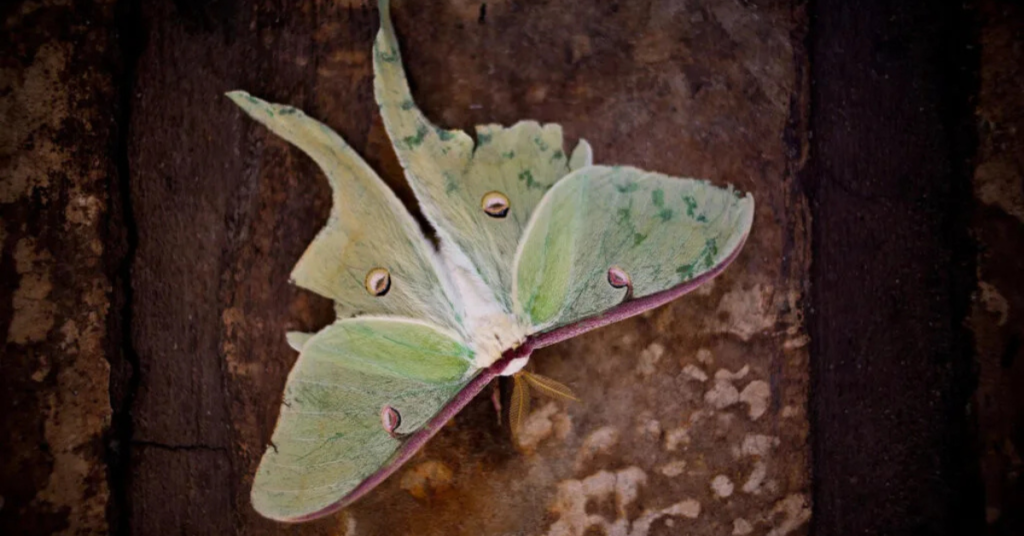In the verdant heart of Kaziranga National Park—where rhinos roam and Bengal tigers rule—appeared a creature so rare it felt like a vision of myth: a Golden Tiger. Also known as the Golden Tabby, this tiger isn’t a separate subspecies but a genetic wonder, its coat shimmering in soft, strawberry-blonde shades thanks to a recessive “wideband” genetic change that alters stripe colouring.
While fewer than 30 of these tigers are known to exist—mainly in confinement—a handful have been documented in the wild, including a recent observation that rekindled both admiration and concern among conservationists.
These rare tigers remind us of nature’s captivating surprises, yet their presence may also hint at inbreeding and shrinking genetic diversity. They represent both the beauty of evolution and the fragility of our wildlife heritage.
In the vast jungles of India, where the stripes of the Royal Bengal Tiger dominate the landscape, an even more elusive creature stalks through the underbrush — the Golden Tiger. This rare feline, sometimes called the Golden Tabby Tiger, captivates wildlife enthusiasts, conservationists, and big cat lovers with its ethereal coat and mysterious origins. With less than 30 individuals believed to exist globally, the Golden Tiger is not only a visual marvel but a symbol of genetic wonder and conservation concern.
Table of Contents
ToggleWhat Exactly is a Golden Tiger?
The Golden Tiger is not a separate species but a colour variant of the Bengal tiger (Panthera tigris tigris). Its unique golden-orange fur, adorned with light cream-coloured stripes, is a result of a recessive gene mutation. This mutation is known as “wide banding,” which affects the black pigmentation in their stripes and enhances the coat’s golden hue.
Unlike traditional Bengal tigers that sport bold black stripes and deep orange coats, the Golden Tiger has a paler, more radiant appearance that looks almost mythical. Its coat appears sunlit even in shade — a visual that has led many to describe it as a ‘living sunset.
The Genetics Behind the Golden Tiger
To understand the Golden Tiger, we must delve into the genetics behind its rare colouring. This unique coat pattern results from both parents carrying the recessive wide-band gene. When two tigers with this rare genetic code reproduce, the possibility of producing a Golden Tiger increases significantly.
This mutation is completely natural but extremely rare in the wild. Most known Golden Tigers today are either born in captivity or tracked in protected wildlife zones in India. Notably, these tigers are not albino or leucistic, and they possess the same behavioural and anatomical characteristics as standard Bengal tigers.
Where Can You Find Golden Tigers?
The heart of India’s tiger population lies in reserves such as Sundarbans, Bandhavgarh, Ranthambhore, and Kaziranga. However, the most famous Golden Tiger was spotted in Kaziranga National Park, Assam. This sighting, captured on camera in 2020, set wildlife circles abuzz — it was the first time such a tiger had been documented in the wild in modern times.
Unlike their more common counterparts, Golden Tigers blend differently into their surroundings. Their bright coats make camouflage more challenging in certain environments, which might explain why their numbers in the wild are so limited.
Golden Tiger vs Bengal Tiger: What’s the Difference?
Feature
Bengal Tiger
Golden Tiger
Coat Colour
Genetic Mutation
Camouflage
Population Estimate
Rarity
None
High in dense jungle
2,500+ in the wild
Common (within protected zones)
Pale golden with light cream stripes
Wide-band gene
Slightly reduced due to lighter colouring
Fewer than 30 (mostly in captivity)
Exceptionally rare
While both are from the same subspecies, the Golden Tiger’s rarity and visual appeal have elevated it to an almost mythical status.
Why is the Golden Tiger So Rare?
The rarity of the Golden Tiger can be attributed to:
Recessive Genetic Mutation
Both parents must carry the wide-band gene, which is incredibly rare.
Lack of Camouflage
The bright coat may make survival in the wild more difficult due to visibility to prey and poachers.
Captive Breeding
Many known specimens are products of selective breeding, often in zoos or reserves focusing on rare species.
Inbreeding Risk
In efforts to maintain the gene, captive breeding sometimes leads to inbreeding, which raises ethical and health concerns.
Golden Tigers in Captivity vs. the Wild
Most Golden Tigers are currently housed in wildlife parks and zoos where they are part of conservation and breeding efforts. However, sightings like the one in Kaziranga have sparked hope that nature, too, is capable of producing these stunning cats without human intervention.
While captivity allows for protection, medical care, and monitoring, conservationists argue that maintaining genetic diversity is crucial to avoid negative impacts of inbreeding. The ideal scenario would be to encourage such genetic diversity within wild tiger populations — a complex task requiring careful intervention.
Conservation and Ethical Challenges
Although the beauty of the Golden Tiger is undeniable, it comes with ethical and ecological questions. Selective breeding to enhance rare genes often results in reduced genetic diversity. Over time, this can lead to health issues and shortened lifespans in the animals.
Moreover, excessive focus on the Golden Tiger in captivity might divert resources and attention from broader tiger conservation efforts, especially for tigers at risk of extinction in their natural habitats.
Spotting a Golden Tiger in the Wild – Is it Possible?
The chances of spotting a Golden Tiger in the wild remain extremely slim. Unlike safari staples such as leopards or standard Bengal tigers, Golden Tigers are seldom seen due to their extremely low numbers. However, dedicated wildlife photographers and researchers can increase their odds by focusing efforts on protected zones like Kaziranga and maintaining patience and perseverance.
Wildlife tourism around such sightings must be regulated carefully to ensure the safety and comfort of the animal. Too much human attention can disrupt their natural behaviours and habitat use.
The Symbolism of the Golden Tiger
In Indian mythology and modern conservation symbolism, the tiger stands for strength, bravery, and beauty. The Golden Tiger, with its celestial coat, adds a mystical layer to this image. It is a reminder of nature’s unpredictability, diversity, and capacity to surprise even the most seasoned observers.
Whether seen in captivity or caught fleetingly in the wild, the Golden Tiger represents a bridge between the rarest of natural phenomena and the complex role humans play in both preserving and endangering it.
Conclusion
The Golden Tiger isn’t just a visual anomaly — it’s a living symbol of genetic diversity, environmental responsibility, and the beauty of nature’s surprises. Its story is both a celebration of what nature can produce and a cautionary tale about the impacts of human interference.
As conservation continues to evolve in India and worldwide, this rare big cat reminds us of the need for balance — between admiration and protection, between science and ethics.
So, next time you hear of the Golden Tiger, remember it’s more than a golden coat — it’s a golden opportunity to protect our wild heritage.







